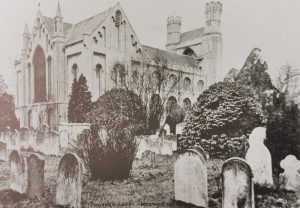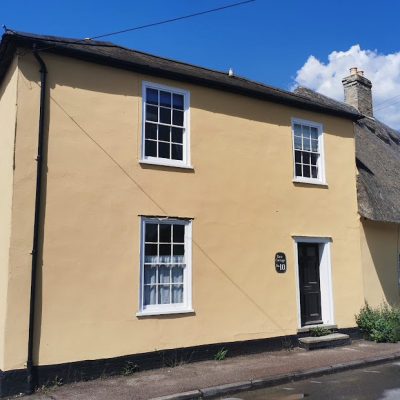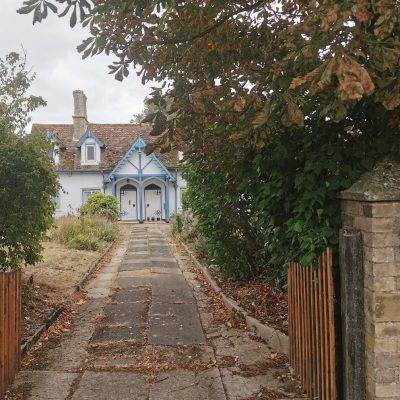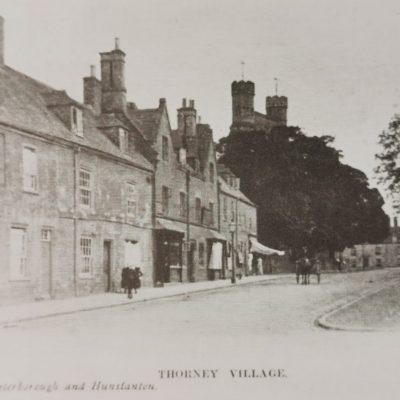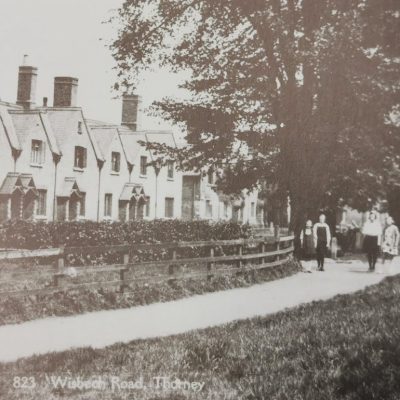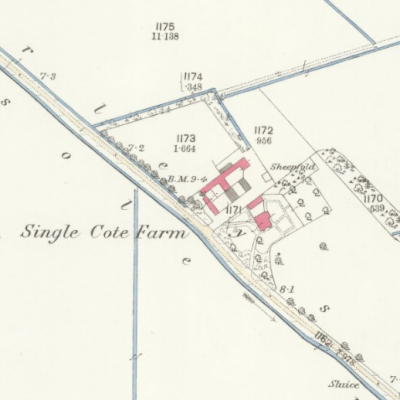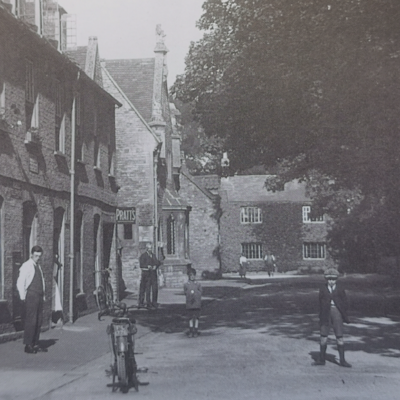Search by topic
- archaeology
- Building of Local Interest
- charity
- church
- crime
- dressmaker
- fire
- Great Eastern Railway
- Listed building
- Mapping Relief
- medieval
- oral history
- poverty
- Public House
- Rattee & Kett
- Religious House
- Roman
- scholar
- school
- Then and Now
- tudor
- women
- work
- world war one
- world war two
Search by text
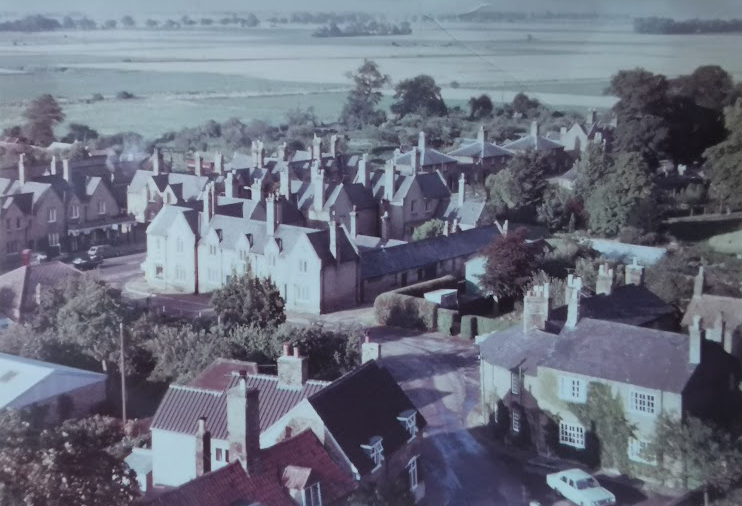 View from Thorney Abbey, 1967 (MoC101/68)
View from Thorney Abbey, 1967 (MoC101/68)Thorney Abbey & Abbey House & Church of St Mary and St Botolph
History of Thorney Abbey
Parish church formed from the 5 west bays of the nave of the Abbey church. A monastery was founded circa 670 destroyed in Danish raid of 870 and refounded in 972 for Benedictine monks. In circa 1085 church was rebuilt by Abbot Guenther and completed circa 1108. The 5 bays of the nave of the church is all that remains, the east end, aisles, and almost all the monastic buildings have gone. In 1638 the ruined church was restored as parish church, when the aisles were demolished and the arcades were filled in with Perpendicular windows.
Late C16 house (Abbey House) to east and 1660 west wing (Thorney Abbey) with connecting range. The west wing was built in 1660 and designed by Peter Mills (architect of Thorpe Hall) with John Lovin as the builder, or perhaps designed by Lovin himself.
Proceedings CAS 64 has a report on ‘The Group of Foreign Stained Glass Windows in Thorney Abbey Church’. The panels are in the lower easternmost window on either side of the nave. They depict 1) the Denial of St Peter, 2) the Supper at Emmaus, 3) the Pietá, 4) the Mocking of Christ, 5) the Women on their way to the Sepulchre, 6) the Harrowing of the Souls in Hell. At the base of the five panels there are five inscriptions in gothic script that are certainly not English. Analysis reveals that they are a Germanic dialect spoken in 15th Cologne.
The family of Hauyser mentioned in the inscriptions was prominent in Cologne at that time. The hypothesis in the report is that the windows came via the Steelyard, a Hanseatic depot in London from the Middle Ages.
The Steelyard was taken over by agents of Queen Elizabeth in 1598 and not restored until 1606, by which time property including windows had been stolen. They were presumably sold on in London.
The windows were installed in Thorney in 1638. From about 1630 a considerable number of Dutch, Flemish, Walloon and French people began to settle in the area around Thorney. It is possible that these windows, somehow acquired, were dedicated to this new community.
Tradition has it that Saxulf, founder and Abbot of Peterborough (654-675) established a community of monks on an island in the fens called Ancraig. One of the monks, Tortred, was matyred by the Danes in 870. After the Danish incursions the location was overgrown until 972 when St Etholwold, Bishop of Winchester, bought it and refounded the monastery.
Ethelwold founded a monastery for 12 monks collected relicts including the bones of Benedict Biscop, tutor of Bede and founder of Jarrow, and the remains of St Botolph and his brother Athulf from Boston. Also the body of Herefirth, Bishop of Winchester, slain in 833 fighting the Danes, two priests: St Cissa and St Huna, two hermits: St Tancred and St Torhtred and finally St Tona, a holy Virgin.
Benefactors included many members of royalty recorded in the Gospel book: Cnut, Harold, Harthacnut and Queen Ema, many of Cnut’s Earls.
The first Norman abbot, Gunther (1085-1112) converted the Abbey to the Marmoutier order, slightly modified Benedictine. He also completely replaced the church and monastic buildings which was completed by 1098.The Great Gate was added in the 12th century.
There was prolific new building in the 13th century under Abbot William Clopton. Edward II stayed several times. However the floods of 1315-1317 were a serious blow to the Abbey finances as land was under water for about three years. There were 33 monks in 1347 but the Black Death two years later killed 13 of the monks as well as 100 estate workers. By 1379 the number of monks had recovered to 28.
There was a large library which contained one ‘scandalous’ book that was ordered to be destroyed on two successive visitations.
At the Dissolution there were 20 monks as well as the Abbot. The value of the monastery was £411 12s 11d. Only the church and the reused masonry in the Abbey House now survives.
Contribute
Do you have any information about the people or places in this article? If so, then please let us know using the Contact page or by emailing capturingcambridge@
License
This work is licensed under CC BY-NC-SA 4.0





